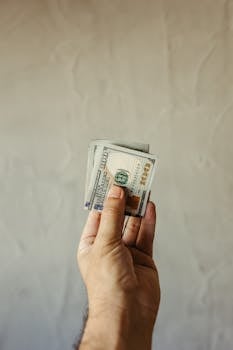Ever wondered why two people earning the same salary can have completely different financial outcomes? The secret often lies in how they manage assets and liabilities—crucial concepts for any financial journey.
Learning the true difference between assets and liabilities matters whether you want to budget better, invest smarter, or simply feel confident about your money decisions. Mistaking one for the other can lead to missed opportunities or even financial pitfalls.
This guide takes you beyond the textbook definitions. We’ll break down assets and liabilities in relatable ways, offer actionable examples, and highlight how recognizing each shapes your economic stability and future growth.
Defining Assets and Liabilities in Everyday Terms
Assets are like fuel for your financial engine, powering your ability to generate income and build lasting wealth over time. Liabilities, on the other hand, tend to drain your resources and can restrict future choices.
Think of your finances as a garden. Assets are the thriving plants that bear fruit and multiply, while liabilities are the weeds that can choke out progress when left unchecked.
- Assets represent anything of value that you own outright or can turn into cash.
- Liabilities are financial obligations or debts that require repayments, reducing your net worth.
- Examples of assets include savings accounts, real estate, stocks, or even collectibles of value.
- Credit card balances, mortgages, and student loans all fall under liabilities since you must eventually repay them.
- The key distinction: assets put money in your pocket, while liabilities take it out.
- Asset growth increases your financial flexibility; liabilities might restrict your decisions in the long run.
Recognizing assets and liabilities for what they are lets you focus on planting more financial seeds and minimizing the impact of weeds in your economic garden.
Real-World Examples to Clarify the Differences
Imagine Anna receives a car as a birthday gift. If she uses it to commute to work and it requires regular repairs, the car can quickly become a liability through ongoing costs.
Consider Tom, who invests in rental property. This property earns him extra money each month. In this case, the property is a classic income-producing asset, boosting Tom’s net worth.
Now picture Sam, who buys the latest smartphone on a high-interest installment plan. Sure, the phone is valuable—but the loan attached turns it into a liability until it’s paid off.
These mini-stories show how the same item—a car, a house, or even a gadget—can be an asset or a liability depending on its role in your finances and whether it puts money in or takes money from your pocket.
Key Criteria for Spotting Assets and Liabilities
Distinguishing between assets and liabilities requires a deeper look at how they affect your financial life. Let’s break down the hallmarks that set them apart and help you to make informed decisions.
- Assets are expected to appreciate in value or generate income; for example, stocks may increase in price and pay dividends, while liabilities, like credit card debt, steadily accumulate interest you must pay.
- The liquidity of an asset—how quickly it can be converted to cash—matters. Savings accounts are highly liquid, while real estate may take longer to sell. Liabilities often have fixed repayment terms and deadlines.
- Assets enhance your creditworthiness, making it easier to qualify for loans or mortgages. In contrast, excessive liabilities can hamper your credit score and limit borrowing opportunities.
- Assets generally provide positive returns over time. A business you own might yield profits. However, a liability such as an auto loan continually draws funds from your account via monthly payments.
- Assets provide security during emergencies—their value can be tapped if needed. Liabilities become burdensome in hard times because they demand regular payments, even if your income drops.
- While some liabilities, such as mortgages, can be “good” if they help build a larger asset, excessive or high-interest liabilities like payday loans rarely offer long-term benefits.
- Both assets and liabilities impact your net worth. The goal? Grow your assets and trim your liabilities for a healthy, upward-pointing net worth statement.
Each item in this list helps you quickly evaluate any item or financial opportunity by seeing if it adds to your resources or subtracts from them.
Assets and Liabilities Through Life’s Milestones
Consider two scenarios: Sarah invests early in mutual funds, steadily increasing her assets. Dave, meanwhile, repeatedly finances new cars—his liabilities mount, making growth harder.
Every milestone, from buying your first home to planning for retirement, involves juggling both assets and liabilities. Choosing to invest in your education might increase short-term liabilities but can yield long-term asset growth via higher earnings.
| Milestone | Common Asset | Common Liability |
|---|---|---|
| Starting a career | Savings account | Student loans |
| Purchasing a home | Equity in house | Mortgage debt |
| Starting a business | Business assets | Business loan |
The table reveals how life’s highs and lows are tied to what you own versus what you owe. Regularly checking both sides ensures better choices at every stage.
Everyday Analogies to Simplify Financial Concepts
Assets are like seeds you plant in spring—that small investment grows over time and brings a bountiful harvest. Liabilities are similar to borrowed tools that, while helpful, come with the responsibility to return or replace them.
Imagine your financial life as a backpack. The more assets you have, the lighter your journey feels. Liabilities add weight, making progress harder and slowing you down when you want to move ahead quickly.
Consider the difference between buying tickets to a concert and learning to play an instrument. The ticket is an expense—a short-lived liability—while musical skills become an asset that can enrich your life for years.
Some believe all debt is bad, but using a mortgage to purchase real estate can create a valuable asset over time. It’s the intent and outcome that matter most, not just the type of obligation you take on.
Factors That Shape Your Asset and Liability Mix
- Savings behaviors shape whether assets grow faster than liabilities accumulate.
- Spending habits can tip the scales, leading to more unnecessary liabilities.
- Investment decisions influence asset growth, sometimes introducing new risks or opportunities.
- Economic trends—such as inflation—impact asset values or liability costs dramatically.
- Job stability and career progression affect both your income and capacity to handle debts.
- Major life events, such as marriage or relocation, change your asset-liability balance.
Analyzing these factors lets you assess not just where you are today, but also how to move toward where you want to be in the future.
Being mindful of these elements helps develop a personalized approach—one that encourages asset growth and keeps liabilities manageable for greater peace of mind.
Comparing Outcomes: High-Asset vs. High-Liability Lifestyles
Those with more assets often enjoy greater flexibility, whether it’s traveling, pursuing education, or navigating times of change. They respond to setbacks without panic and with more options at hand.
On the flip side, carrying too many liabilities restricts possibilities. A job loss or sudden expense stresses the household, and debt repayments compete with everyday needs—a scenario that’s all too familiar for many families.
What if you flipped the script? Reducing liabilities and steadily building assets, even in small increments, can change the story from stress and scarcity to progress and opportunity over time.
Building a Balanced Financial Foundation
Managing assets and liabilities isn’t just for accounting experts—everyone can take charge of their finances with some simple practices. Creating an ongoing snapshot of both what you own and what you owe is a smart first step.
Strive for balance: grow your assets by saving and investing wisely, and keep liabilities from piling up unnecessarily. Every dollar allocated to assets is a dollar working for your future security and flexibility.
Routine financial check-ins help you spot when liabilities are creeping up or when an asset may need extra attention. Adjusting course now and then is perfectly normal.
Remember, no two journeys are identical. Some may prioritize rapid debt repayment; others focus on building diverse investments. The best plan matches your values, goals, and current circumstances.
Ultimately, understanding the real impact of assets and liabilities helps you take confident, informed steps towards financial well-being—one wise decision at a time.

